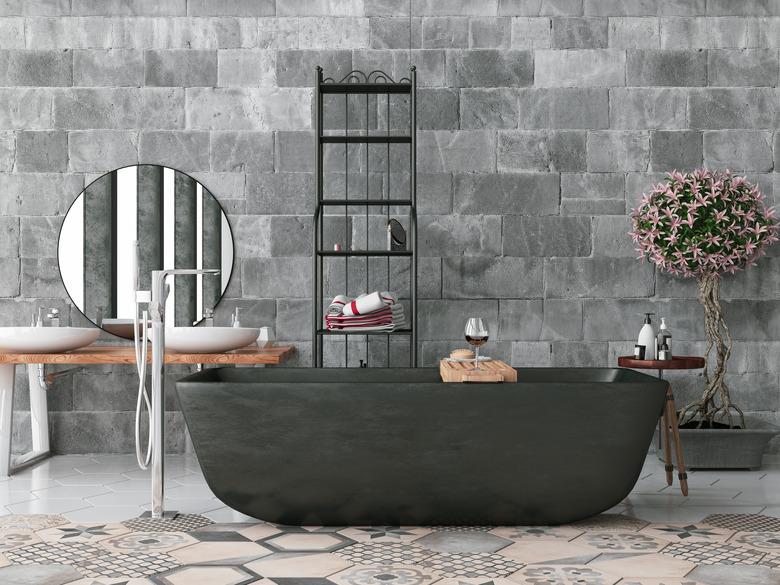How To Pour Concrete Bathtubs
Concrete bathtubs are a sleek and modern addition to any luxury bathroom. Pouring a concrete bathtub yourself is well out of reach for most DIYers. However, you can work with a professional to carry out this task on your behalf and still have the freedom to design the tub exactly how you'd like it. When planning a concrete bathtub, you will need to consider the size of your bathroom, the structural and support needs of your home and the tub, and the aesthetic you are looking for.
Choosing a Professional
Creating and/or installing a concrete bathtub is a highly specialized skill that requires experienced craftspeople. You might have difficulty finding such a contractor in your town, but a local general contractor or bathroom remodeling specialist may be able to help you track down the right concrete fabricator. You might also seek advice from local contractors or installers who specialize in concrete countertops, since casting a tub requires similar skills to fabricating concrete countertops. Concrete tubs can be fabricated off-site, then brought into the home for installation, but often a tub is simply cast in place, using a concrete mold.
Types of Poured Concrete Tubs
A professional will then guide you through the design process. They will want to assess the space you have available to help you decide how big the tub should be. In addition, you can choose from several styles of concrete tubs.
These include freestanding tubs, which may be located in the center of a large bathroom and require a finished appearance on all sides, and sunken tubs, which are actually set into the floor. The latter will allow you additional options, including enhanced plumbing or whirlpool features, since the tub and its pipes are actually occupying the space under your bathroom. A professional can help you decide if you have the room beneath your bathroom to accommodate such a tub.
You may prefer the style of a deck tub, which is usually placed flush against either two or three walls but is surrounded by a deck on the other exposed wall(s). You may decide to have stairs on the side or in the center of such a tub for easy access. Plumbing features can be hidden beneath the deck portion.
Creating the Bathtub
A professional team will begin the construction process only once they have worked through the design process with you and you have signed off on the plans. These plans will include the dimensions necessary for both the outer and inner forms, as well as for all associated plumbing, integrated decks or stairs. Be sure that your tub has an entrance method that is suitable for your physical capabilities; you might also consider the abilities of young children or elderly family members. It's essential that you can safely get in and out of the tub, whichever style you choose.
A concrete tub is typically created with a plastic one- or two-part mold. The mold is secured with temporary framework; then a special concrete mix (such as a sand mix that contains no gravel) is poured or hand-packed in or around the mold. After the concrete hardens, the mold is removed and an extensive process of finishing begins. This may include filling voids in the surface and sanding, staining (for custom colors), polishing and sealing the concrete. The last step is adding trim details, such as drain covers and faucet hardware, and making all final water and drain connections.
Your choice of finish will play a major role in the overall aesthetic of your bathroom, so choose carefully. If you have a room that is very modern, you might want to choose a dark-colored concrete and ground concrete look. If you prefer a bright and light-colored space, consider a white, polished finish on your tub.
